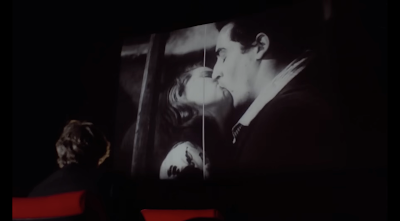Cécilia Tsan and Allan Hon play Barrière, Bach, Gernot Wolfgang, and Offenbach, Mount Wilson Observatory
DAVID J BROWN
Two eminently listenable three-movement suites by French composers, one Baroque and one Romantic, book-ending an acknowledged masterwork and a world premiere, plus a much-loved encore, and all in a unique venue… what’s not to love? And lest anyone think that adjective to be unwonted hyperbole, has any other observatory in the world repurposed a telescope dome as a concert hall alongside its existing function?
From tentative beginnings in 2017, the summer seasons of Sunday Afternoon Concerts in the Dome at Mount Wilson have gone from strength to strength (always excepting the “covid year” of 2020), and for 2025 there are more, and more varied, concerts than any previous year, masterminded as ever by Artistic Director Cécilia Tsan and Mount Wilson Institute Trustee Dan Kohne.
So on the last Sunday in June a capacity audience, a good half being first-timers, seated itself on the platform that surrounds the 100-inch Hooker telescope for this season’s first classical concert. Dan Kohne set the scene, noting that this day, June 29, was the 157th birth anniversary of the observatory’s founder George Ellery Hale—and then there was the ever-memorable engineering spectacle: the dome’s giant observation shutter slowly cranking open far overhead, and the whole structure rotating around the stationary telescope (the machinery still operating perfectly in its 108th year), carrying the audience and performing platform into position for ample light without direct glare.
If one word could sum up the performances by Cécilia Tsan and Allan Hon, respectively Principal and Assistant Principal Cello with the Long Beach Symphony Orchestra, that word would be “generosity”—not only in how they listened to and responded to each other through the many opportunities for give-and-take that the music enabled, but also in the spacious tempi that the dome’s resonant acoustic tends to require.
 |
| Jean-Baptiste Barrière. |
 |
| Jacques Offenbach, c.1850. |
 |
| Gernot Wolfgang. |
Ready to Rumble! in its cello duet version was a fun jeu d’esprit, and clearly enjoyed by audience and players. However, it had the misfortune to follow—as would have been the case for just about any work—a piece that's not only a supreme creation for the instrument for which it was originally conceived but also what has been called one of the greatest achievements of humanity in any medium.
 |
| J. S. Bach, c.1720, around the time of the composition of his Partita No. 2. |
With the music’s elaborate strands separated out, clarified, and judiciously shared between the two instruments, plus their deep, rich sonorities, and together with the masterfully judged pacing and subtle rubato of the whole, Tsan and Hon delivered a powerfully expressive account shorn of any distracting effortfulness. To take just one instance of their control and shaping, the careful broadening and emphasis at the Ciaconna’s mid-point when Bach brings us back to the opening theme made the moment extraordinarily powerful and moving. It seemed to say “this is where we came from, but though we have come far, there is still so much more…” They delivered.
Finally, there was that much-loved encore piece, Ennio Morricone’s radiantly sentimental main theme from Cinema Paradiso, played from the heart by Tsan and Hon. Under its spell it was easy for the cinematic mind’s eye to see the movie’s concluding montage of romantic clips (click here or on the image above)— spliced together in secret by the old projectionist Alfredo—as flickering shadows against the steel panels, struts and beams of Hale’s great dome—truly a Coelestium Paradiso.
---ooo---
100-Inch Telescope Dome, Mount Wilson Observatory, Sunday 29 June 2025, 3 p.m. and 5 p.m.
Photos: The performance: Todd Mason; Barrière: IMSLP; Offenbach and Bach: Wikimedia Commons; Gernot Wolfgang: Composer website; Cinema Paradiso clip: YouTube.
If you found this review to be useful, interesting, or informative, please feel free to Buy Me A Coffee!

















No comments:
Post a Comment